AI ENABLED ‘FASTMRI’ DEVELOPED TO MAKE MRI SCANS FOUR TIMES FASTER THAN THE CURRENT TECHNOLOGY

Nearly two years ago Facebook’s Artificial Intelligence Research (FAIR) group and New York University Grossman School of Medicine joined hands to try and develop a neural network which can produce effective MRI images by using as little data as possible. The traditional MRI scan can be very uneasy for a patient as the scan machine is claustrophobic and it takes time to carry out the scan. The thought behind the creation of fastMRI is to relieve the patients of this unsettling feeling wherein the scientists trained a machine learning model on pairs of high-resolution and low-resolution MRI scans to predict what a final MRI scan looks like by using just a quarter of the usual input data.
For the study, six independent radiologists were recruited to test the interchangability of traditional MRI images with the AI-enabled MRI images. From a sample size of 108 patients whose knee scans were taken using both the new AI model and the standard MRI scan, two different datasets were created. All the datasets were then blindly evaluated by the radiologists. The surprising part was that all the diagnoses were the same regardless of whether the images were taken by the AI model or the standard scan. Infact, it was noted that the radiologists rated the overall quality of AI images much better than the traditional MRI images.
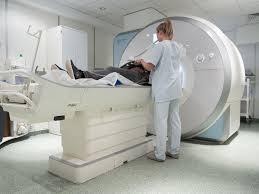
Thus the USP of fastMRI is that this model promises to dramatically speed up MRI scans without the need to upgrade the presently used imaging hardware. The MRI hardware vendors can rapidly incorporate new algorithms into their products. The training data and model created by fastMRI are completely open access and can be incorporated into existing MRI scanners conveniently. This model shows scans can be done faster, in lesser time causing less inconvenience to the patients and eventually aiding quicker diagnosis.
The innovation is another tool to improve patient experience while creating images for an effective diagnosis. This study was published in the American Journal of Roentgenology. The publication of this research has validated the efficacy of AI algorithm which is designed to produce accurate MRI scans by using four times less data than which is usually required. The real challenge would be to take something from research into a clinical setting. The adoption and implementation from the manufacturer needs to be efficient, effective and seamless. The researchers are already in talks with the scanner companies and believe within a few years the AI model scans will be used in most of the hospitals to provide a faster diagnosis by doctors and an enhanced patient experience while imaging for patients.
SOURCE: www.inshorts.com
TRANSPARENT SOLAR PANELS TO REFORM THE FUTURE ENERGY SUPPLY
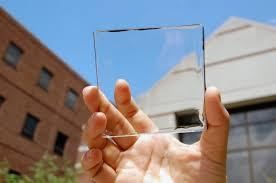
The first fully transparent solar concentrator which could turn virtually any glass window or shield into a PV cell was created in 2014 by researchers at Michigan State University (MSU). The good news is by 2020 researchers in the US and Europe had already achieved full transparency for their solar glass. This makes solar panels highly appealing and efficient, thus getting rid of the unsightly rooftops or extensive land parcels. The new solar panel technologies are ready to transform the solar energy landscape globally.
Photovoltaic glass is the game-changer in expanding the scope of solar energy and these PV glass are nothing but transparent solar panels which can literally generate electricity from windows in homes, offices, sunroof’s of cars or even smartphones. These transparent solar panels can be easily and conveniently used in various settings ranging from skyscrapers with large windows to mobile devices like a phone, an e-reader or a laptop.
This new solar panel technology is changing the way solar cells absorb light wherein the solar cell selectively harnesses a portion of the solar spectrum which is visible to the naked eye alongside allowing the normal visible light to pass through. To achieve this technological breakthrough, the researchers developed transparent luminescent collar concentrator (TLSC) which is composed of organic salts that are designed to absorb specific invisible ultraviolet and infrared light wavelengths that glow as another invisible wavelength. This wavelength is then guided to the edge of the window plastic as thin PV solar strips which convert it into electricity. Researchers estimate that once mass production for these panels begin, TLSC should be able to deliver an efficiency of nearly 10%.
A supplement to transparent solar glass or panels are the solar panel blinds which are designed to harvest sunlight to produce energy and also act as a window by blocking the direct sunlight from entering inside. Such solar panel blinds have been launched by an innovative startup named SolarGaps which claims that these blinds can cut down the energy costs by 70%. For every 10 square feet of window space, these window blinds can generate approximately 100 watts of power. The solar blinds can be installed outside or inside and the user can control their angle and positioning by using an application which will also apprise the user of the energy generation figures. Another great feature is that the angle of the solar blinds can be automatically optimised as per the position of the sun. This technology is surely a revolution in the field of utility of solar energy and holds the potential to literally turn every building in the world into a solar producer.
Pioneers in promoting this new solar panel technology are researchers at Michigan State University and manufactures like Brite Solar, Physee and Ubiquitous Energy. The European manufacturer, Physee has introduced PowerWindow which is an advanced product and can only be found installed as transparent solar panel covering an area of 300 square feet in a building of Dutch Bank. These power windows use small solar panels which are installed along the edges of the window panes to generate power. These solar panels or windows and blinds are a huge part of the concept of sustainable buildings which is going to give us a better future. The company is promoting these power Windows as a clear photovoltaic glass which will become the glass facade for next-generation sustainable buildings. In future they expect these panels to work autonomously to sense, power, and regulate the climate inside the building using intelligent systems.
SOURCE: republicworld.com
INDIAN COVID WARRIOR, A 17 YEAR OLD MAKES LUNGAI APPLICATION
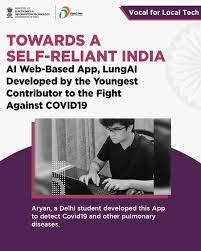
The Government of India has been making multiple efforts to contain covid-19 ever since it’s outbreak in India from March onwards 2020. As one of the initiatives, the central Government launched ‘Aatmanirbhar Bharat App Innovation Challenge’ for techies and start-ups. So under the category of Sustainable Environment of the Ministry of Human Resource Development’s (HRD) ‘Aatmanirbhar Bharat Ideathon’, Aryan Gulati, a Delhi school student of class XII has won by creating a web-based application named LungAI which can detect COVID-19 in 3 to 5 seconds and other lung disorders. Praiseworthy point is that the app is estimated to have an accuracy of 90%. This also makes Aryan the youngest winner of the contest wherein he has received an amount of INR 2 lacs. The inspiration for the young innovator comes from the fact that he wanted to create a system wherein there was no physical contact with potential COVID-19 patients and thus he used x-ray and CT scan images for detection of abnormalities.
The reports show that this application provides the user with the results in 3-5 seconds after the CT scan or an X-ray of the chest has been uploaded on the website. The app is enabled with a messaging system through which one can directly send the detection to doctors and hospitals. The website can detect positive and negative cases of COVID-19 and if the result comes out to be positive then it also furnishes the user with a list of hospitals situated near him/her. If the result for COVID-19 comes out to be negative then the patient can check for other lung diseases using the same application. ICMR is in talks with the innovator to launch the LungAI application on a large scale in India.
SOURCE: www.hindustantimes.com

‘COVIRAP’ – THE LOW COST, PORTABLE COVID-19 TESTING DEVICE BY IIT KHARAGPUR
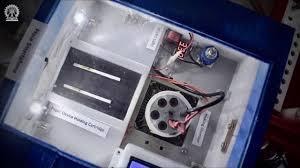
Coverage of huge population living in rural areas of India for screening of COVID-19 is a challenge for the Government in containment of this pandemic. In an attempt to tackle this challenge, researchers at IIT Kharagpur, have developed a device named ‘COVIRAP’ which is a cuboid-shaped portable, low-cost testing device that can deliver results within an hour of taking the sample from a potential infected person. The device has already got the certification from ICMR which intends to use COVIRAP to scale up screening of coronavirus cases in peripheral and rural areas.
The USP of this device is its high quality, accuracy and affordability making the test available at INR 500 per test. The device also uses very low energy for its operation and minimally trained rural youth can operate this device. Since the development cost of this machine is less than INR 10,000 with minimal infrastructural requirement, it is affordable to make this technology reach common people at low-cost.
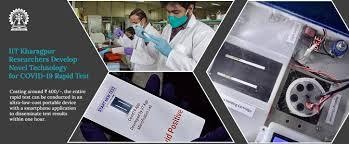
Patent for this device is still pending but once it is done, the device will be available for commercial use by medical technology companies. IIT is welcoming corporates and start-ups to approach them for technology licensing and commercial scale of production. Since the test can detect extremely low levels of viral loads in a sample, researchers feel COVIRAP can replace the already in use RT-PCR test as it gives results faster, with accuracy and at a cheaper rate. The research team has expressed that the number of tests per one-hour batch in a single machine unit can be further increased to higher limits so that testing can be done on a large scale. The machine is robust, flexible and generic implying that apart from conducting COVID-19 testing, it can also conduct isothermal nucleic acid-based tests (INAT) like dengue, malaria, influenza, tuberculosis, Japanese encephalitis and many other infections as well as vector-borne diseases. This feature makes COVIRAP need of the hour solution for screening large number of population in shorter duration in India.
SOURCE: The Economic Times
SARVA- THE YOGA START-UP TO EXPAND ITS DIGITAL WINGS

Chennai-based yoga and mindfulness-focused wellness start-up by Sarvesh Shashi ‘SARVA’ has recently raised undisclosed funding from US-based venture capitalist fund Mantra Capital and it’s strategic partner, the Patni family to enhance its digital offering. The funding from international music provider Cutting Edge Group will help sarva to gain access to over 20,000 minutes of music and content based on meditation provided by Myndstream, Cutting Edge’s record label.
Sarva, a yoga and wellness ecosystem focuses on the physical, mental and emotional well-being of an individual. This ecosystem offers yoga, mindfulness and wellness to people around the world through it’s physical and digital approaches. Presently the services are being provided in 25 countries worldwide in which sarva offers 25 forms of yoga with an aim to organise the presently fragmented wellness and yoga industry. Sarva’s unique blend of an online and offline playbook has made it very attractive and accessible for people who desire to grow mindfully and spiritually. In the past this start-up has raised funding from many celebrities too like Aishwarya R Dhanush, Jennifer Lopez, Shahid and Meera Kapoor and Malaika Arora among others.
SOURCE: The Print

BRAINWAVES TO TRACK HUMAN PERFORMANCE DURING CRISIS BY IIT MADRAS
A research team under the mentorship of Prof. Rajagopalan Srinivasan of the Department of Chemical Engineering at IIT Madras conducted a research to show that electroencephalogram(EEG) can be used to measure brainwaves in workers to gauge their mental sharpness especially during crisis times. EEG measures the cognitive workload which is the measurable mental effort that is put in by an individual to perform a task. High cognitive workload state of workers make them prone to commit mistakes which then lead to accidents. The cognitive workload measurement will help in assessing the capability of a worker to respond to an emergency situation in real-time which could in turn prevent accidents and mishaps in a factory. World over nearly 70% industrial accidents are caused due to human errors which occur either at the planning or execution stage, depend not only on a person’s skill but also his/her mental state and sharpness in that situation or moment. A mismatch between the demands of a task to be performed and the ability of a person to perform it leads to high cognitive workload often leading to poor performance or committing mistakes.
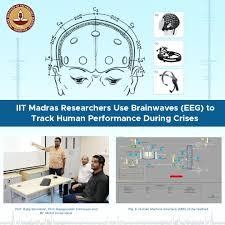
In the study six participants were included and each of them performed eight tasks. Sensors were affixed to the heads of the participants to make observations. The tasks were to monitor a typical section of an industry for any disturbances which if not controlled by the participant in a given time frame would lead to accidents. The disturbance increased their cognitive workload and only if they made the correct decision in time, did the cognitive workload reduce. Thus the participants needed a thorough understanding of the industrial unit they were to take care of. Different types of brainwaves were observed and their results showed that the amount of theta waves could identify any mismatch between the participant’s mental model of the process and the actual plant behaviour during abnormal situations. Thus the researchers deduced that the spectrum of power density in the theta band correlated well with participants’ successes and failures during the task
The study was recently published in the Journal of Computers and Computer Engineering. The research thus suggests one of the ways to assess whether a person is fit to handle a high-risk situation. The training processes can be altered to cater to the need of workers to improve their stress handling situations. The aim is to enable weak performers perform better with reduced chances of committing errors.
SOURCE: www.inshorts.com
NEW ELECTRONIC SKIN DEVELOPED TO MAKE ROBOTS “FEEL PAIN”

A team of scientists led by Prof. Madhu Bhaskaran at RMIT University, Australia have developed a prototype of an electronic skin that can mimic the body’s feedback response and react to pain. The e-skin fires signals with the same lightning speed with which the nerve signals travel to the brain. Thus this e-skin could make robots and other machines more sensitive to touch, contact and pain. The prototype is a step towards next generation biomedical technologies and a part of intelligent robotics. The e-skin would react instantly when heat or cold, pressure reach a painful threshold. This effort is truly an example of smart prosthesis bringing robots closer to reality.
The prototype already has biocompatibility and skin-like stretchability but further development needs to be done to integrate this technology into biomedical applications. The research paper titled ‘Artificial Somatosensors: Feedback Receptors for Electronic Skins’ is published in Advanced Intelligent Systems.
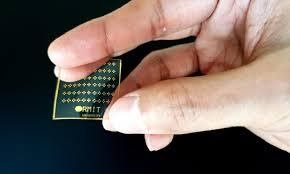
Dr. Avnatika Batish, working as the Director of Strategy and Healthcare at International Health Emergency Learning and Preparedness. She is also a guest faculty for MBA (HR) and MBA Healthcare Management at various B-Schools and is a soft skills trainer.

